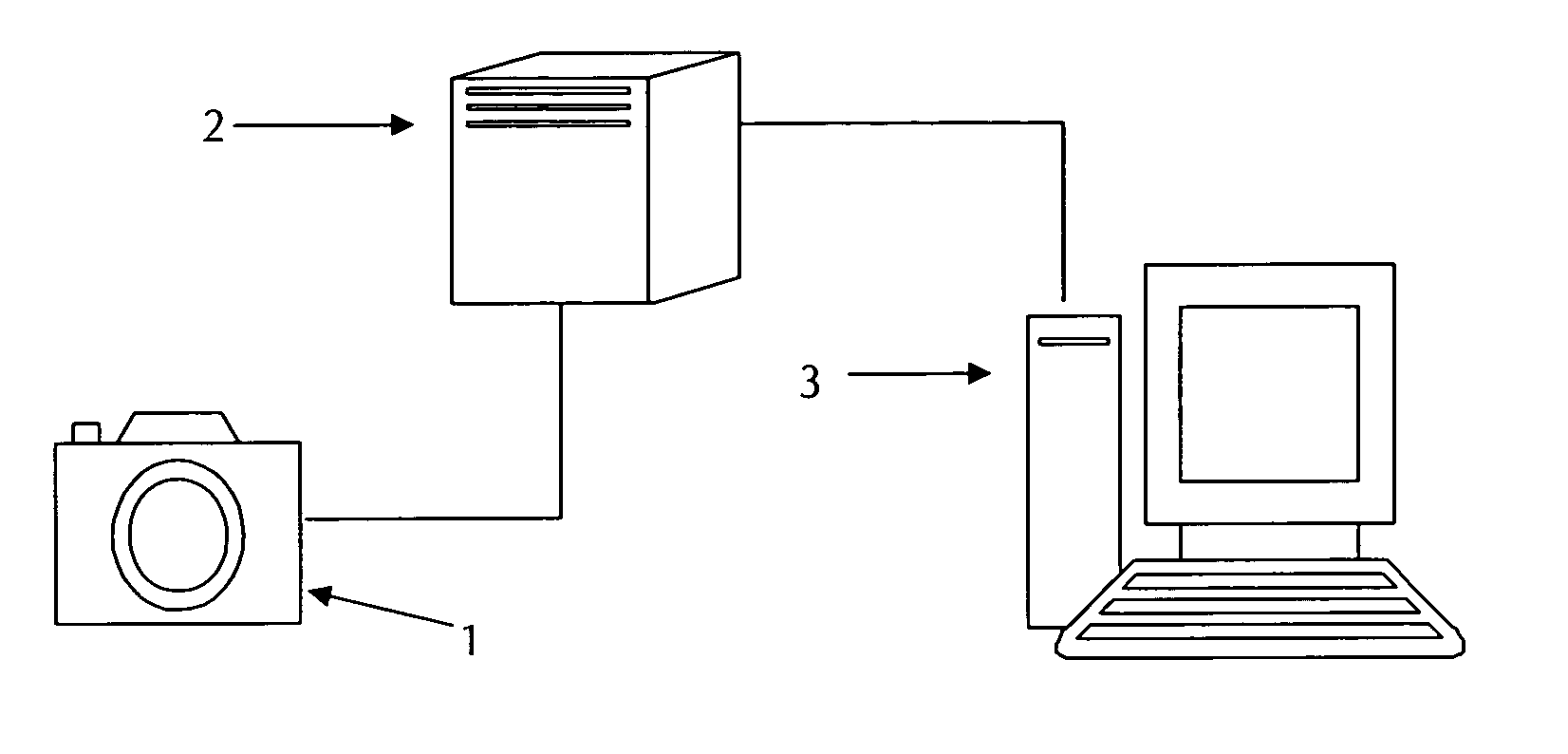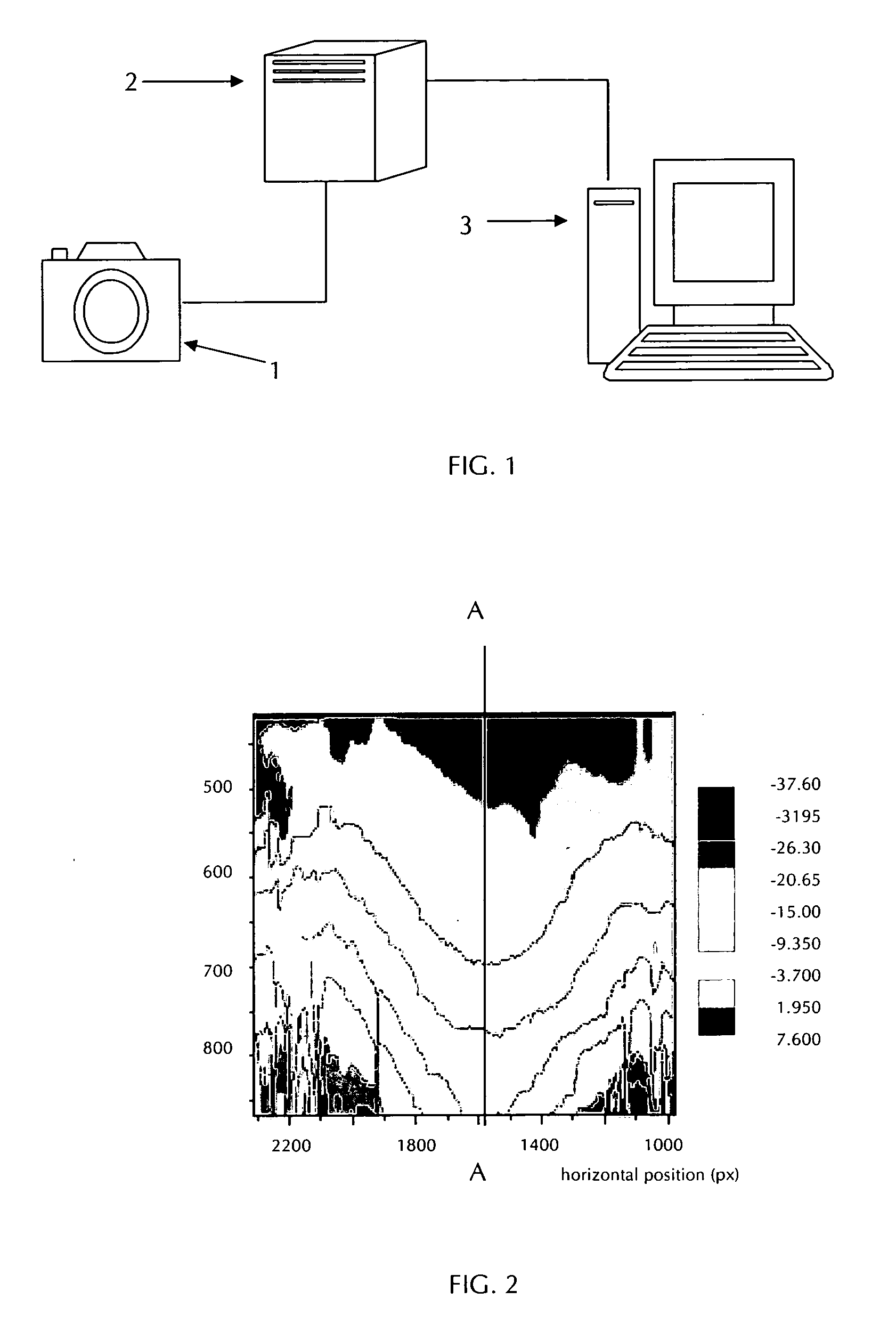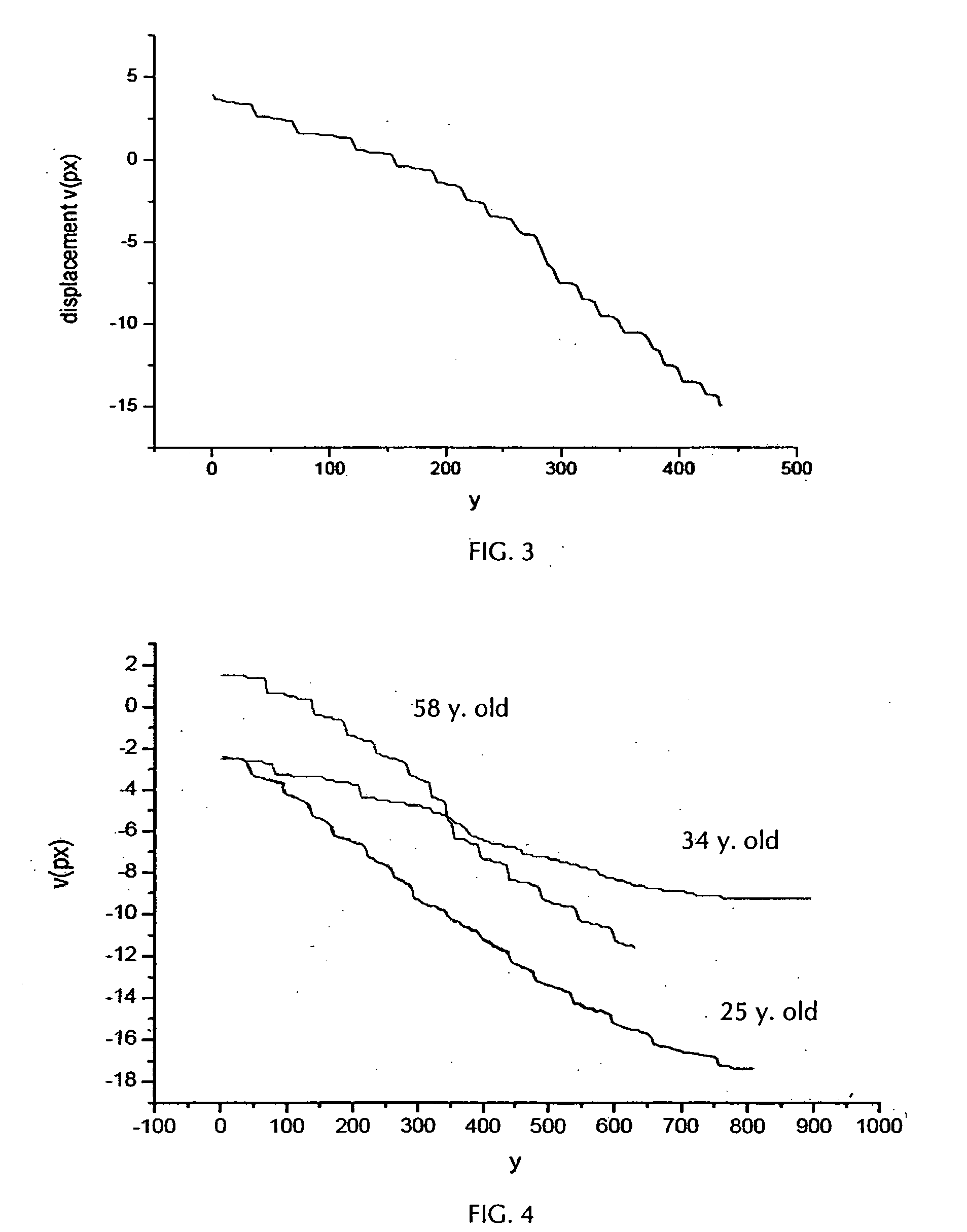Method of evaluating the effects of exogenous and endogenous factors on the skin
a technology of exogenous factors and skin, applied in the field of cosmetics and dermatology, can solve the problems of permanent contraction of small muscles under the skin, loss of skin elasticity, and sagging skin
- Summary
- Abstract
- Description
- Claims
- Application Information
AI Technical Summary
Benefits of technology
Problems solved by technology
Method used
Image
Examples
example 1
Pore Displacement, Structural Age of Skin and Wrinkle Prediction
[0031] In this example, the area of study was the forehead. An initial image was made with the eyes closed and the final image was made with the eyes opened and looking up. Both images were made with minimal contraction of the muscles of the forehead. A field of displacement vectors was generated and the vertical component of that field, or projection map, is shown in FIG. 2, where each shade represents the indicated displacement in pixels. For this deformation, the displacement of the pores of the forehead is predominantly vertical and there is a vertical line of approximate symmetry between the eyes. Because of this, it is convenient to look at a cross section of the vertical projection map, the cross section being made along the vertical line of symmetry between the eyes. A graph of vertical displacement along this cross section is shown in FIG. 3, where the vertical displacement of the pores, in pixels, is shown o...
example 2
An Age-Correlation Study—Forehead
[0035] The following experiment was carried out on three persons, aged 25, 34 and 58. These test subjects “looked their age”. Images were made of the forehead area, as described above. The vector displacement maps were resolved into horizontal and vertical projection maps and the vertical projection map was analyzed by studying a cross section along the line of symmetry between the eyes. FIG. 4 shows the vertical cross section graphs for all three subjects. The units on both the horizontal and vertical axes are pixels. As above, the most critical observation is the presence of steps in the graphs, these steps corresponding to localized areas of skin weakness. Clearly, localized areas of skin weakness are present even in a twenty-five year old with apparently firm, young skin. Therefore, the presence of local discontinuities (steps) in pore displacement due to normal facial expression does not by itself allow a comparison of one test subject to anot...
example 3
A Study on the Effects of Gravity—Forehead
[0038] As a further example of its usefulness, the technique of the present invention was used to study the effects of gravity on the facial skin, particularly the skin of the forehead. Generally, the skin and muscles of the face are subject to the pull of their own weight. This weight may be at a maximum for sixteen or more hours per day while the head is in an upright position.
[0039] In the first variation of this study, two sets of before and after images were made. The subject was in a laying down, face up (supine) position. By laying down, the effects of gravity are somewhat neutralized because the skin of the forehead does not have to support its own weight. After this, two more images were taken, the only difference being that the subject was in an upright position, standing, for example. In each case, the before and after images were made within several seconds of each other. The before expression was with the eyes closed, but oth...
PUM
 Login to View More
Login to View More Abstract
Description
Claims
Application Information
 Login to View More
Login to View More - R&D
- Intellectual Property
- Life Sciences
- Materials
- Tech Scout
- Unparalleled Data Quality
- Higher Quality Content
- 60% Fewer Hallucinations
Browse by: Latest US Patents, China's latest patents, Technical Efficacy Thesaurus, Application Domain, Technology Topic, Popular Technical Reports.
© 2025 PatSnap. All rights reserved.Legal|Privacy policy|Modern Slavery Act Transparency Statement|Sitemap|About US| Contact US: help@patsnap.com



